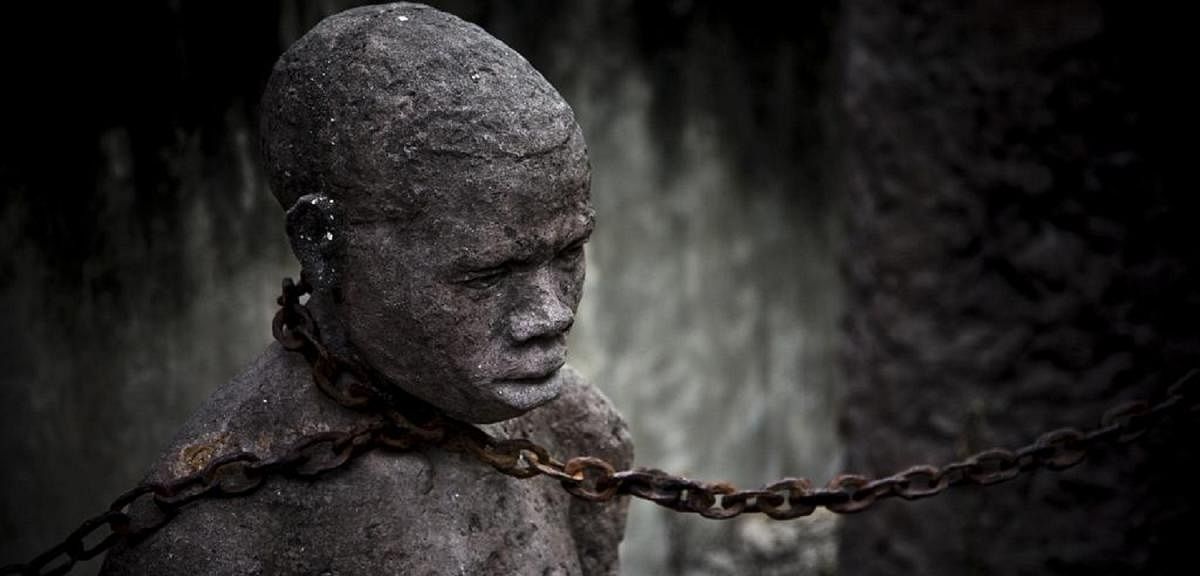
Stone Town in Zanzibar is replete with stories. Guides will have at least one story for each of the hundreds of buildings in the area spread over 200 hectares and virtually a hub of activity in the island. A visit to the island is incomplete without seeing the Stone Town Slave Museum. It will be a chilling experience for a visitor familiar with Alex Haley’s bestseller Roots: The Saga of an American Family.
An article in a vernacular daily a couple of years ago was the trigger for my wife and I to visit the island before embarking on the much-famed wildlife reserves in Tanzania. The article was about some of the structures that were dark reminders of the brutal and uncivilised slavery system that prevailed in many African nations.
Interestingly, Zanzibar, now a semi-autonomous region of Tanzania, had the last slave market and it was shut down in 1873 by the British. Stone Town was host to the world’s last open slave markets, presided over by Arab traders.
‘Welcome to The Anglican Christ Church Cathedral (the former slave market site),’ white letters on the fading green colour signboard at the entrance of the museum in Stone Town states. It reads: “You are now standing at the former slave market site. The world’s last open slave market and notorious place, where slaves from east and central African regions were bought and sold. The trade in man (sic), women and children was stopped by decree from the Sultan of Zanzibar on 6 June, 1873, following the appeal made by Dr David Livingston (a Scottish Christian Congregationalist and an explorer in Africa) in 1857 to the men of great English universities of Oxford and Cambridge to liberate Africa from slavery. The Cathedral Church of Christ was built by Bishop Edward Steere (an English Anglican colonial Bishop who worked with David Livingstone to abolish slavery in Zanzibar in the 19th century) in 1879. The cathedral stands exactly on the site of the former slave market and the high altar marks the location of the old whipping post!”
The church work took almost seven years for completion.
Sordid tales
The museum, mostly displaying exhibits, is located below St Monica’s guesthouse and is a small place spread over four rooms. Information boards reveal the whole story of slave trade in Africa, more so in Zanzibar.
We experienced a churning feeling as we went around the exhibition, reading the information boards telling the sordid saga of slaves being shipped from different places and sold like animals in the market. Chambers where slaves were kept still exist. Now, the chambers have three windows. According to information, it had only one narrow window when the slave market was flourishing.
One of the boards says all slaves would have to spend three days in those cramped and horrid conditions and this was done to separate the weak from the strong. Another board reads that slaves died like flies and they would be dumped on the roadside if they did not survive the long journey in dhows and walking.
Later, they would be brought to the whipping post for the auction. They would be whipped with a stinging branch by a slave master to check whether slaves were strong or not. The one not opening his mouth would be considered a strong slave and would go for a higher bidding. Rewards were also given for getting strong slaves.
Prestige issue
One of the exhibits inside the museum reads: “A woman came into the court and accused a man of having unjustly enslaved her. Evidence was produced and the woman liberated. The man was fined 40 rupees and 20 rupees were handed to the woman as compensation. She was asked shortly afterwards what she was going to do with the 20 rupees. She at once answered; I will buy a slave with it.” Owning slaves was considered a prestigious issue around that time in Africa.
According to available information, the mid-19th century Zanzibar streets were teeming with slaves and they were employed in clove plantations. Getting slaves was not restricted to Africa alone. It is said that women were brought in from other continents to become the sultan’s harems, and, Caucasian and Mesopotamian slaves were the most sought after.
Slaves came to predominate the population, making about two-thirds of the island’s population. Slavery became so ingrained in society that the slaves who earned wages bought slaves or invested in slavery.
Outside the museum, sunken in the ground, is an artwork of life-size statues of slaves bearing original chains. It shows five slaves chained together in a pit. They are of men and women, young and old, with features that show the variety of tribal and ethnic backgrounds. Their expressions are neither of torment, nor resignation. They look numb, worn down and yet somehow defiant.
Dr David Livingstone also finds a mention in the exhibition. He is credited to have played an important role in ending the slave trade.
As we left the museum, we were reminded of Abraham Lincoln’s quote: “If slavery is not wrong, nothing is wrong.”